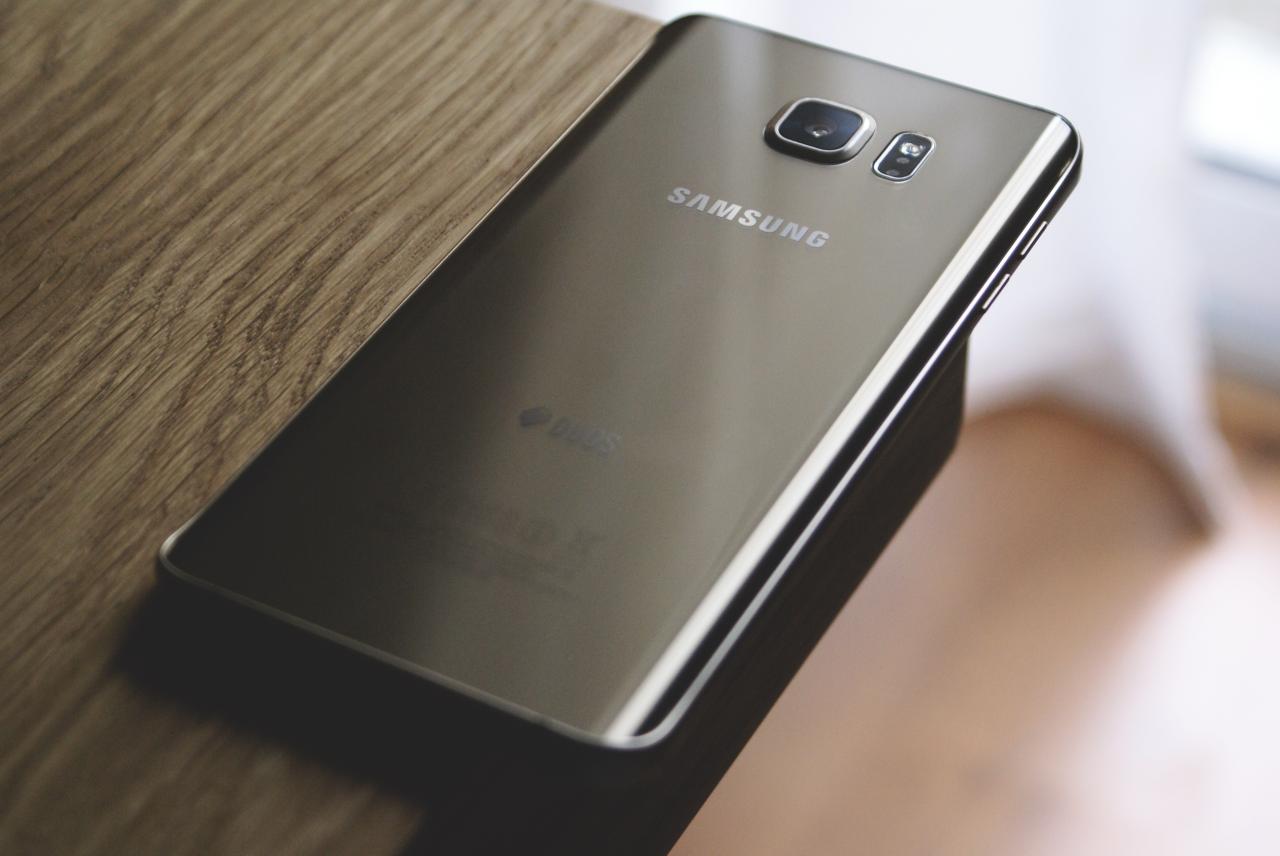samsung galaxy note 7 is a device that represents both groundbreaking innovation and significant controversy in the smartphone industry. Released in August 2016, it was hailed for its stunning design, impressive specifications, and the unique S Pen feature that enriched the user experience. However, this flagship device quickly became synonymous with safety concerns due to battery issues, leading to one of the most publicized recalls in tech history. In exploring the Galaxy Note 7, we delve into its features, the challenges it faced, and its lasting impact on the smartphone landscape.
This analysis will cover the design and build quality of the Galaxy Note 7, its specifications, and the critical battery issues that marred its reputation. We will also explore user experiences and the legacy of the Galaxy Note 7, examining how it influenced safety protocols in the industry and shaped consumer trust in technology.
Overview of Samsung Galaxy Note 7

The Samsung Galaxy Note 7, launched on August 19, 2016, was a significant entry in Samsung’s renowned Note series. It aimed to blend high-end smartphone features with productivity tools, appealing to power users and professionals alike. Despite its initial success, the device became infamous due to a major battery issue that led to recalls and ultimately its discontinuation.
The design and build quality of the Galaxy Note 7 showcased Samsung’s commitment to premium aesthetics and user experience. With a sleek glass and metal finish, the device offered a modern look that was competitive with other flagship smartphones of its time, such as the Apple iPhone 7 and Google Pixel. Its curved edges and immersive display not only enhanced its visual appeal but also improved user ergonomics, making it comfortable to hold and operate.
Design and Build Quality
The Galaxy Note 7 featured a stunning design that set it apart from competitors. Its dimensions measured 153.5 x 73.9 x 7.9 mm, weighing 169 grams, which gave it a solid yet lightweight feel. The device was constructed with Gorilla Glass 5 on both the front and back, providing durability while maintaining a premium appearance.
Key design elements included:
- Curved edges for an immersive viewing experience.
- A 5.7-inch Super AMOLED display with a resolution of 1440 x 2560 pixels, ensuring vibrant colors and deep contrasts.
- IP68 rating for water and dust resistance, making it suitable for various environments.
- Placement of the S Pen stylus, which allowed for intuitive navigation and note-taking.
Specifications and Performance Metrics
The performance of the Galaxy Note 7 was driven by high-end specifications that were competitive for its time. The device was powered by either the Qualcomm Snapdragon 820 or Exynos 8890 processor, depending on the region. This powerful hardware allowed for smooth multitasking and efficient handling of demanding applications.
Important specifications included:
- 4GB of RAM, which facilitated seamless app performance and management.
- 64GB of internal storage, expandable via microSD card, catering to users with extensive media libraries.
- A robust 3,500 mAh battery, which initially provided all-day usage under normal conditions.
The Galaxy Note 7’s camera system was also noteworthy, featuring a 12 MP rear camera with dual pixel technology and a 5 MP front camera. This setup ensured impressive photography capabilities, even in low-light conditions.
In terms of software, the Note 7 ran on Android 6.0 Marshmallow at launch, with Samsung’s TouchWiz interface offering additional customization options. The integration of features like Always On Display and enhanced S Pen functionalities further enriched the user experience, making the Galaxy Note 7 a standout device in its class despite its unfortunate legacy.
Battery Issues and Safety Concerns

The Samsung Galaxy Note 7, albeit celebrated for its innovative features, was ultimately overshadowed by significant battery issues that raised serious safety concerns. The root cause of these issues stemmed from faulty battery design and manufacturing defects, leading to instances of overheating and combustion. This section delves deeper into the specifics of these battery problems, the subsequent recall process, and the evolution of safety protocols in battery production.
Battery Design Flaws and Recall Process
The Galaxy Note 7 was equipped with lithium-ion batteries, which are generally safe and reliable when manufactured properly. Unfortunately, the Note 7’s batteries faced severe design flaws, including inadequate space for the battery cells to expand. This led to the cells making contact with other components, resulting in short circuits and fires. Samsung initially attempted to address these issues by replacing the faulty batteries, but the replacement units exhibited similar problems, prompting a full recall.
The recall process, initiated in September 2016, was unprecedented in scale and complexity. Samsung provided consumers with options to exchange their devices for a different model or receive a full refund. The company also implemented a detailed reporting system to track incidents and ensure consumer safety.
“The recall of the Note 7 was a pivotal moment in smartphone history, showcasing the importance of safety over sales.”
The ramifications of the recall were profound. For consumers, it sparked concern about the safety of their devices, while Samsung faced a drastic hit to its brand reputation. The company reported an estimated loss of $5.3 billion, impacting its market share and leading to a decline in consumer trust.
Evolution of Safety Protocols in Battery Manufacturing
In the aftermath of the Galaxy Note 7 crisis, the smartphone industry has significantly re-evaluated and enhanced its battery safety protocols. Manufacturers now adhere to stricter design guidelines and testing procedures to mitigate the risk of similar incidents. Key measures include:
- Improved Quality Control: Enhanced inspection processes during battery cell production to identify potential defects before products reach consumers.
- Robust Testing Standards: More rigorous testing methods, including thermal imaging and stress tests, to assess battery performance under various conditions.
- Battery Management Systems (BMS): Integration of advanced BMS technology that monitors battery health and performance, providing real-time data for early detection of any anomalies.
- Certification Protocols: Adoption of standardized testing certifications, such as UL 2054 and IEC 62133, to ensure compliance with global safety standards.
These advancements reflect a collective effort within the industry to prioritize consumer safety and restore confidence in lithium-ion battery technology. The Galaxy Note 7 incident serves as a critical lesson, reinforcing the necessity for stringent quality assurance measures throughout the production cycle.
User Experience and Features

The Samsung Galaxy Note 7, despite its infamous battery issues, offered a remarkable user experience through its innovative features and refined design. With an emphasis on productivity and creativity, the device appealed to both professionals and tech enthusiasts alike. The integration of the S Pen and advanced software capabilities set it apart from competitors, making it a sought-after model in the smartphone market at the time of its release.
One of the standout features of the Galaxy Note 7 is its S Pen, which provides a versatile tool for taking notes, creating sketches, and navigating the device. The S Pen is equipped with enhanced sensitivity and precision, allowing for a more natural writing experience. Users appreciated its ability to write on the screen even when the device was locked, making it convenient for quick notes and reminders. Additionally, the Air Command feature lets users access various shortcuts and tools, enhancing overall productivity.
Unique Features and User Testimonials
The unique features of the Galaxy Note 7 have garnered many positive testimonials from users, highlighting its performance and usability. Users have emphasized the following aspects:
- S Pen Functionality: Many users praised the S Pen’s ability to transform the smartphone into a digital notebook. The precision and pressure sensitivity allowed for detailed drawings and notes, which were particularly appreciated by artists and students.
- Display Quality: The 5.7-inch Quad HD Super AMOLED display received accolades for its vibrant colors and deep blacks, contributing to an immersive viewing experience for videos and games.
- Water Resistance: The IP68 rating for water and dust resistance provided users with peace of mind, allowing them to use the device in various environments without fear of damage.
- Software Features: Samsung’s software enhancements, such as split-screen multitasking and the ability to group apps, were well-received. Users reported improved efficiency while juggling multiple tasks.
The user experience of the Galaxy Note 7 can be compared to its predecessors, such as the Galaxy Note 5, and its successors, like the Galaxy Note 8. With the Note 5, users enjoyed a similar S Pen experience; however, the Note 7 introduced features like Iris Scanner for added security, which was a significant upgrade. Conversely, the Note 8 improved upon the camera capabilities and dual-lens setup, but many users felt a nostalgic attachment to the Note 7’s straightforward design and features.
“The S Pen makes my life easier; I can jot down ideas instantly without needing to unlock my phone.”
User feedback highlights that the Galaxy Note 7 was not only a productivity powerhouse but also a device that fostered creativity and personal expression. While its legacy was marred by safety concerns, the unique features and overall user experience continue to be a point of discussion for tech enthusiasts and Samsung fans alike.
Legacy and Impact on the Smartphone Industry: Samsung Galaxy Note 7

The Samsung Galaxy Note 7, once heralded as a flagship device, quickly became synonymous with failure. Its disastrous battery issues not only tarnished Samsung’s reputation but also left an indelible mark on the smartphone industry at large. The effects of this incident continue to resonate, influencing how manufacturers approach safety, design, and consumer trust.
Long-Term Effects on Samsung’s Brand Image
The aftermath of the Galaxy Note 7 recalls a pivotal moment in Samsung’s history, shaping its brand image and product strategy for years to come. The company faced significant challenges, including headlines emphasizing recalls and consumer safety concerns. As a result, Samsung implemented extensive changes in its quality assurance protocols and adopted a more rigorous testing process for future devices.
Key areas of impact include:
- Heightened Safety Protocols: Samsung launched a new eight-point battery safety check to ensure all future devices undergo rigorous testing.
- Brand Recovery Initiatives: Marketing campaigns focused on transparency and safety were introduced, showcasing the improvements made in subsequent products.
- Shift in Product Development Focus: Samsung prioritized features that enhance user security and safety, often at the expense of aggressive innovation.
“The Note 7 incident compelled Samsung to redefine its approach to design and safety, affecting product development for years thereafter.”
Influence on Regulations and Safety Standards, Samsung galaxy note 7
The Galaxy Note 7 incident catalyzed widespread changes in safety regulations across the smartphone industry. Following the crisis, industry leaders and regulatory bodies recognized the need for standardized safety measures to prevent similar occurrences in the future.
The implications included:
- Establishment of Industry Standards: The incident prompted organizations like the Institute of Electrical and Electronics Engineers (IEEE) to work on setting more stringent battery safety standards.
- Increased Regulatory Scrutiny: Manufacturers faced heightened regulatory oversight, leading to more comprehensive safety assessments before product launches.
- Collaboration Across Companies: Competing brands began to collaborate on safety initiatives, sharing best practices to create a safer consumer environment.
“The Note 7’s failure served as a wake-up call for the entire smartphone industry, resulting in the adoption of stricter safety standards.”
Impact on Consumer Trust in Technology Companies
The repercussions of the Note 7’s failure significantly influenced consumer trust in technology firms. As the incident unfolded, consumers became acutely aware of the potential risks associated with high-tech devices, reshaping their purchasing decisions and expectations.
Key aspects of this shift included:
- Increased Skepticism: Consumers began to approach new technology releases with caution, often seeking out reviews and safety reports before making a purchase.
- Demand for Transparency: Users expressed a clear preference for brands that communicate openly about safety measures and product testing.
- Emergence of Consumer Advocacy: Consumer advocacy groups gained traction, pushing for recalls and better safety practices, influencing how companies engage with their customers.
“Post-Note 7, consumers expect more transparency and accountability from technology companies, redefining the relationship between brands and their customers.”
Answers to Common Questions
What were the key features of the Samsung Galaxy Note 7?
The Samsung Galaxy Note 7 featured a 5.7-inch Quad HD Super AMOLED display, an S Pen stylus, water resistance, and a dual-edge design.
Why did the Samsung Galaxy Note 7 face battery issues?
Battery issues were primarily due to faulty lithium-ion batteries that could overheat and catch fire, leading to safety concerns.
How did Samsung handle the recall of the Galaxy Note 7?
Samsung initiated a global recall, offering replacements and refunds, and implemented a rigorous testing protocol for replacement devices.
What impact did the Galaxy Note 7 incident have on Samsung’s reputation?
The incident damaged Samsung’s brand image, resulting in decreased consumer trust and financial losses, but also led to improved safety protocols in future products.
How did the Galaxy Note 7 influence smartphone regulations?
The Galaxy Note 7 incident prompted stricter safety standards and regulations for battery manufacturing in the smartphone industry.
The Samsung Galaxy F series has gained popularity for its balance of performance and affordability. With impressive camera capabilities and long-lasting battery life, it’s designed for users who crave functionality without breaking the bank. This makes it a compelling choice for budget-conscious consumers looking for a reliable smartphone.
In the realm of premium smartphones, the Samsung S 10 stands out with its cutting-edge features and sleek design. Offering an exceptional display and powerful performance, it caters to tech enthusiasts and everyday users alike. Whether you’re taking stunning photos or enjoying your favorite media, the S 10 ensures a seamless experience that lives up to its reputation.